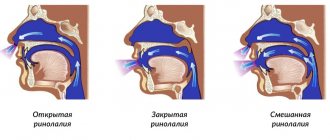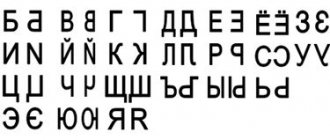Dysarthria is a speech pathology in which incorrect (distorted or difficult) pronunciation of sounds, words, phrases, and syllables is observed. This speech disorder is caused by brain damage or various disorders of the articulatory apparatus (which is why you can often find the expression “articulatory dysarthria”).
This disorder can be observed with normal intelligence, against the background of mental retardation and with mental retardation - oligophrenia, then it has specific features. For dysarthria, specialists often use speech therapy massage.
The following symptoms of dysarthria can be distinguished:
- disorders associated with speech motor skills;
- violation of sound pronunciation;
- improper speech breathing;
- voice disorders;
- violations of the prosodic side of speech.
Organic damage to the central nervous system in this case occurs in the prenatal, birth or early stages of a child’s development (usually up to 2 years). That is why, as a rule, experts talk about the development of dysarthria in preschool children.
In addition, in early childhood, damage to the central nervous system and speech dysarthria in a child can develop as a result of the following diseases:
- neuroinfections (miningitis, encephalitis);
- purulent otitis media;
- hydrocephalus;
- traumatic brain injuries;
- severe intoxication.
Forms of dysarthria are classified based on the identification of different locations of brain damage. When correcting dysarthria, the First Children's Medical Center uses various methods of speech therapy.
The degree of impairment of speech or articulatory motor skills may vary. Conventionally, there are three degrees of dysarthria: mild, moderate, severe.
1. A mild degree of dysarthria (erased dysarthria) is characterized by defects in sound pronunciation, as well as the absence of gross violations of the motor skills of the articulatory apparatus.
2. Children with moderate speech dysarthria make up the largest group. They are characterized by amicity: lack of movement of the facial muscles.
3. Severe degree of dysarthria (anarthria) - deep muscle damage and complete inactivity of the speech apparatus.
Diagnosis of dysarthria should include a thorough examination of speech motor skills, sound pronunciation and general speech development.
Bulbar dysarthria
Bulbar dysarthria is a form of dysarthria characterized by speech motor disorders. The development of these disorders is caused by lesions of the glossopharyngeal, vagus and hypoglossal nerves or their nuclei. For bulbar dysarthria, the following characteristic is relevant:
- slurred speech;
- slow pace of speech;
- monotone;
- paucity of speech production.
All of the above defects are accompanied by swallowing disorders. With bulbar dysarthria, both voluntary and involuntary speech movements are impaired.
In terms of external clinical manifestations, bulbar dysarthria is similar to pseudobulbar dysarthria. Pseudobulbar dysarthria is a form of dysarthria that occurs with bilateral damage to the motor corticonuclear pathways running from the cerebral cortex to the nuclei of the cranial nerves of the trunk. This form of dysarthria can lead to central paralysis of the muscles innervated by the glossopharyngeal, vagus and hypoglossal nerves.
Reasons for development
Dysarthria is not an independent disease, although often this speech disorder is the main manifestation of various pathologies of the central nervous system. In most cases (up to 85%), dysarthria accompanies cerebral palsy. Malformations of the nervous system can be caused by a variety of reasons:
- pathological conditions of the fetus during intrauterine development. These include severe toxicosis and the pathological course of pregnancy, chronic maternal diseases and intrauterine infections, hypoxia, asphyxia or ischemia of the fetal brain, Rh conflict, etc.;
- genetic predisposition (presence of severe hereditary pathologies);
- head injuries and illnesses suffered by a child in the first few years of life. These include hydrocephalus, meningitis and other neuroinfections, purulent otitis media, as well as poisoning with toxic substances and intoxication due to infectious diseases.
The above reasons lead to damage to the parts of the brain that control movement, the cerebellum, basal ganglia, brain stem, nerve fibers and their connections with muscles.
Manifestations of dysarthria are different, and they depend on which part of the central nervous system is affected.
Cerebellar dysarthria
Cerebellar dysarthria is characterized by disorders associated with the pronunciation side of speech. These disorders are caused by damage to the cerebellum. This form of dysarthria is characterized by the following manifestations:
- loss of fluency of speech;
- disturbance of the rhythm of speech;
- loss of expressiveness;
- slowness and intermittency of speech.
This speech disorder is observed against the background of impaired coordination of movements of various muscles, which is caused by pathology of the cerebellum. Correction of cerebellar dysarthria involves etiopathogenetic treatment of the underlying pathology, drug support, as well as general rehabilitation measures: physical therapy, massage, work with a psychologist, classes with a speech therapist).
Prevention
Preventive measures involve preventing the development of pathological processes that impair speech abilities. To avoid the occurrence of illness, it is recommended:
- Treat abscesses, infectious diseases and other pathologies in a timely manner.
- Avoid traumatic brain and spinal injuries and severe stress that disrupts the functioning of the nervous system.
- When working with harmful substances, observe safety precautions so that toxic vapors do not enter the body.
- Strengthen the body with vitamin complexes (in consultation with your doctor). This will help avoid oxygen starvation and cerebral circulation disorders.
- Regularly monitor blood pressure levels to prevent circulatory and vascular system disorders.
Extrapyramidal dysarthria
Extrapyramidal dysarthria (or subcortical) is a form of speech disorder that occurs as a result of damage to the subcortical nodes and their nerve connections. This pathology is characterized by involuntary movements of the facial and respiratory muscles, as well as involuntary movements of the tongue. Such movements may not appear for some time and intensify when the child tries to make a voluntary movement. At the same time, the pronunciation of individual sounds can be preserved.
Overall speech intelligibility depends on control of speech breathing and voice, and is affected by vocal strength. If the voice sounds good, speech can be quite understandable. The sonority of the voice is inconsistent. As a rule, extrapyramidal dysarthria is characterized by attenuation of the voice towards the end of the phrase. The child's voice may be dull and strained. There is no fluency of speech.
Subcortical dysarthria is characterized by incoordination of the movements of the respiratory and articulatory muscles. The tone of the muscles of the neck and shoulder girdle is often increased. There is no stability in the construction of the phrase. With sharp spasms, speech is impossible. In addition, this form of dysarthria can be combined with hearing impairment such as sensorineural hearing loss.
Symptoms
The main symptoms of bulbar dysarthria:
- The child's speech is slurred, inhibited, with poor articulation. The “R” sounds are replaced with fricative ones. Instead of the sound “B”, the sound “P” is pronounced “V”, the sound “P” changes to “F”.
- Consonant voiced sounds are completely or partially absent. Unstressed and stressed sounds are pronounced the same. The letter "A" sounds best.
- There is a noticeable rhythm disturbance. Speech sounds less emotional and monotonous. Expressive speech is not available to a child with dysarthria.
- The child often chokes and has problems swallowing when eating food and water.
- The child's voice is low and nasal.
- Facial expressions are poorly expressed, facial asymmetry is observed (with unilateral nerve damage).
A child suffering from this type of dysarthria has simple slurred articulation. In some cases, voiced sounds disappear from speech. The deaf begin to dominate them. Speech loses its expressiveness and emotionality; it is not melodic. Expressive speech causes great difficulty for the patient and quickly tires him.
The exact symptoms depend on which cranial nerves are affected. In some cases, all of these symptoms may occur.
Erased dysarthria in children
Erased dysarthria, as mentioned earlier, is the first degree of severity of dysarthria. With this disorder, mild disorders of the phonetic and prosodic (voice strength, tempo, rhythm, intonation) components of speech are observed. These disorders are caused by insufficient supply (innervation) of the articulatory organs with nerve cells.
The following characteristics of this speech defect are noted:
- unclear articulation;
- distortion of sounds of several phonetic groups;
- complexity of automation;
- unimpressive speech.
Correction of erased speech dysarthria involves the use of articulation, breathing and finger exercises, as well as speech therapy massage. Particular emphasis is placed on automating evoked sounds and normalizing prosody. Classes with a speech therapist are carried out in parallel with treatment by a neurologist. When treating, it is necessary to take into account the characteristics of dysarthria - the severity of the pathology, its type, as well as the level of speech development of the child.
Treatment of dysarthria
Correction of dysarthria should be comprehensive and include speech therapy sessions, drug therapy, as well as rehabilitation measures prescribed by a neurologist. The methodology and procedure for correction work is determined strictly individually for each patient.
Speech therapy classes for dysarthria are aimed at:
- development of fine motor skills;
- development of motor skills of the speech apparatus (speech therapy massage for dysarthria, as well as articulatory gymnastics are widely used);
- development of physiological and speech breathing, voice;
- correction of impaired pronunciation and consolidation of correct sound pronunciation;
- work on the expressiveness of speech and the development of verbal communication.
Treatment methods for dysarthria in children are selected depending on the severity of the pathology, as well as the level of speech development of the child.
By contacting our Center, you will receive qualified help from a speech therapist who will pay special attention to your child and give answers to all your questions. We are happy to help you! First Children's Medical Center: Children's health - parents' peace of mind!
Share on social networks:
To make an appointment with a doctor
Choose a doctor
Diagnostics
A thorough examination and further therapy is carried out by a neurologist and speech therapist. In some cases, consultations with other highly specialized specialists may be required. At the initial stage, the doctor collects complete information - when the first symptoms appeared, whether there are any chronic diseases, whether family members have similar complaints.
After collecting anamnesis, the neurologist conducts a visual examination of the pharynx, checking the mandibular and pharyngeal reflex. The role of the speech therapist at the diagnostic stage is to assess speech abilities (pronunciation of sounds, changes in timbre during a conversation, disturbances in the tempo of speech).
If the patient’s voice is nasal, then to exclude dangerous pathologies in the nasal cavity, an examination by an otolaryngologist is prescribed. After a thorough visual examination, a number of diagnostic measures are prescribed:
- Electromyography (ENMG) is a diagnostic method that tests muscle activity, the functionality of the nerve innervating the damaged muscle, the affected area, and the severity of damage to the nerves and muscles.
- Transcranial magnetic stimulation (TMS) is a technique based on the activation of brain cells. The examination is carried out using a special apparatus with an alternating magnetic wave. The procedure helps determine the excitability of cortical neurons, the functionality of the cortex, and the interaction of certain parts of the brain with each other. Based on the results obtained, the doctor draws conclusions about the functioning of the speech centers, as well as the visual apparatus, cognitive functions (perception of information), and other things.
- Computed tomography (CT) is a study that allows you to examine in detail the internal organs, bone tissue and vascular system in different projections. The procedure takes only 10-15 minutes for each organ examined, after which the doctor receives a layer-by-layer X-ray image, which is used to make a diagnosis.
- Electroencephalography (EEG) is a study of the vital activity of the brain by recording impulses that come from its individual areas. The technique allows us to identify pathological processes occurring in the brain, as well as assess the nature and severity of the disorder.
- Magnetic resonance imaging (MRI) of the brain is a scan of organs using magnetic waves to produce high-quality images. Diagnostics is designed primarily to identify brain abnormalities and a thorough examination of the vascular system. In addition, MRI is used to check intervertebral discs, bile ducts and other human organs.
Diagnostics is the most important stage, allowing you to make a reliable diagnosis and make the right prescription. If the type of pathology and its severity are incorrectly determined, it is impossible to make a correct prescription. This threatens that the prescribed medications will not bring the desired result, and the disease will progress.
To diagnose pathology, you can go to the Yusupov Hospital at any time of the day, where certified specialists will conduct a detailed examination of organs using the latest equipment. Thanks to the latest generation of safe devices, doctors can accurately determine the type of pathological process without harm to the patient’s health. This will allow you to select an individual course of treatment and eliminate the dangerous disease in a short time.









